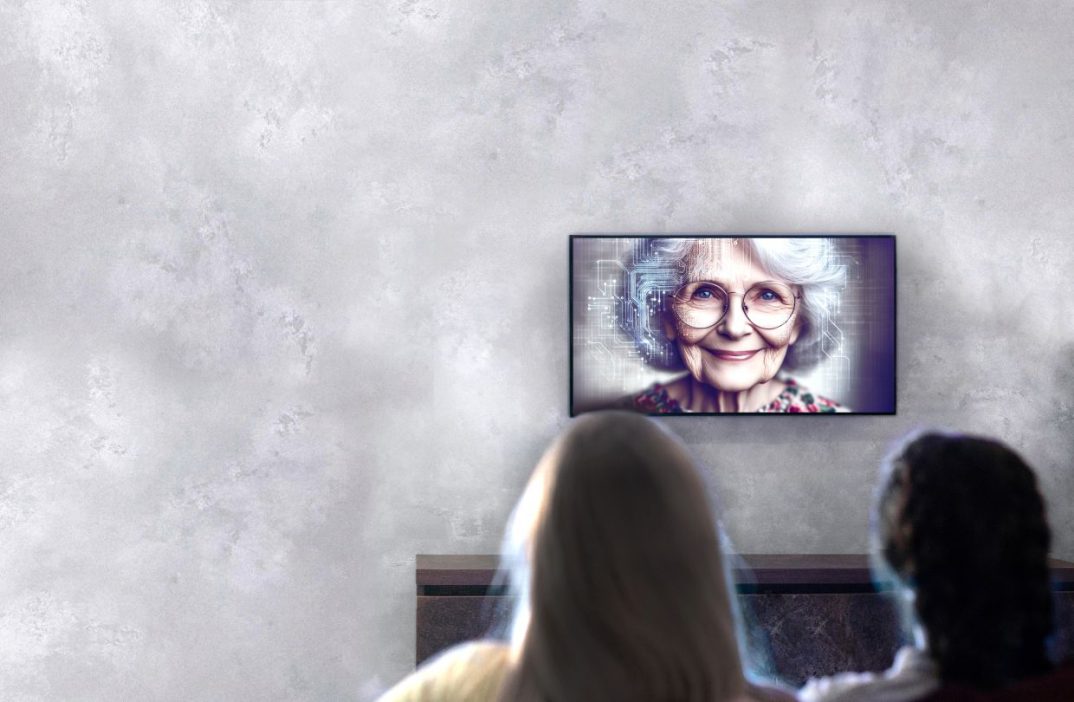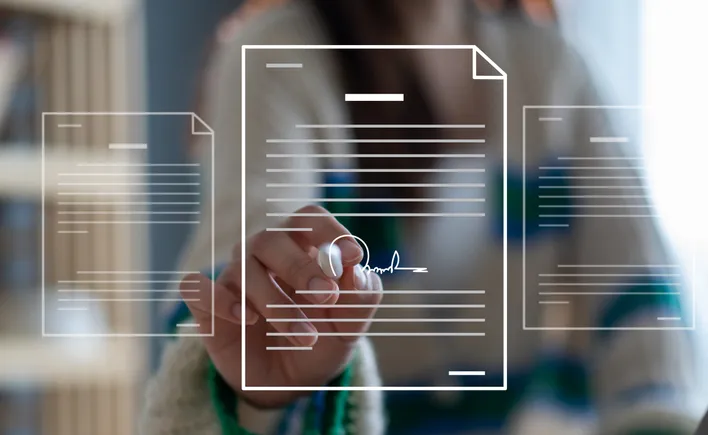Muhd Redwan Adman lost his father 10 years ago. Looking back, the photographer, who is now in his 30s, wishes he had more photos and videos of his father, which could help him reminisce fondly about times gone by.
In an interview, he says: “Back then, I didn’t have enough money for the latest camera phones or cameras. I had only just started working when my dad passed away. Sadly, I only have one good photo of my father.”
In recent years, many people all over the world have turned to technology to bridge the gap left by lost loved ones. By using AI-generated images and videos, they are able to recreate and preserve precious memories.
These advancements allow for the creation of lifelike representations, offering a sense of comfort and connection to those who have passed away.
As more families embrace these innovations, they find solace in being able to “see” and “hear” their loved ones once again, keeping their memories alive in new and meaningful ways.
When generative AI tools like ChatGPT and Midjourney became available, Muhd Redwan tried creating images of his late dad.
It later occurred to him that he could also use generative AI to create a video with his late father in it. “I had a desire to see my father’s face again, and I thought a video would be worth trying too,” he says.
Muhd Redwan used Luma AI, a generative AI tool that can produce realistic-looking videos from images and text prompts.
Using the one photo that he had of his father, Muhd Redwan was able to generate a video in three hours. The result was a five-second clip of a figure with his father’s likeness walking out of a kitchen.
“I was excited when I saw the video, even though it only lasted for a few seconds. When I showed it to my mum, she was stunned. She said it was like seeing her husband again. My siblings were thrilled too.
“Somehow, those few seconds were enough to soothe some of our feelings of longing that we had for our father,” he says, adding however that it was such an overwhelming experience that he doesn’t think he would do it again. “Perhaps, once was enough.”
Similarly, Daus Ma’amor used generative AI tools like Bing and DeepSwapper to create a series of digital images of his late father, who passed away in 2021. The civil servant shared these poignant images in an emotional short video on Facebook, accompanied by the heartfelt song Ayah Aku Rindu Padamu by Mawi, evoking a powerful response from viewers.
“It was during Ramadan, and I remembered how my late father used to cook rendang over a charcoal fire for us. I wanted to recreate those moments using AI. I was feeling sad because I missed him, and I felt seeing those images would help me feel better,” he says.
When Daus’ father was on his deathbed during the pandemic, Daus was only able to say goodbye to him via video call.
“I often wish that I could have been by his side during his final moments. Using generative AI, I now have a happy image of dad to hold on to instead, one that I didn’t think was possible to see again,” he says.
Seeing is re-living
Like Muhd Redwan and Daus, many others in Malaysia are turning to generative AI tools to produce digital works with images of their deceased loved ones as a way of coping with grief.
Some people share these AI-generated works with generative AI enthusiast groups on social media. With over 286,000 members on Facebook, one such popular group is Prompters Malaya, of which Muhd Redwan is a top contributor.
Group administrator Afiq Yahaya says people turn to generative AI to fulfil a deep sense of curiosity, longing and to find answers.
“People look at old family photos because they want to reminisce and relive memories. With modern tech tools like generative AI, you can even go a step further and ‘see’ a loved one move or talk again. For many, this is something worth exploring,” Afiq says, adding that some of these works are conceptual and depict loved ones in serene-looking afterlife scenes.
Many also turn to generative AI for restorative work. In one popular social media post with over 5,000 likes, a user restored an old, damaged photo of another person’s late father.
The photo was enhanced with colour and brightness, and generative AI also filled in gaps in the photo. The user said the person who made the request was happy with the results.
“I don’t think it’s a problem if they want to use generative AI to ‘reanimate’ old photos, add colour to monochromatic photos, or anything else just to rekindle some memories,” Afiq says.
Afiq himself has created AI-generated images of music legends Tan Sri P. Ramlee and Datuk M. Daud Kilau, sharing these images, along with some interesting information about the singers, as a tribute on social media.
Going a step further
In other parts of the world, generative AI users have gone beyond merely creating photos and videos to “communicating” with deceased loved ones.
MIT Technology Review reported on one such case in China, where a man turned to AI company Silicon Intelligence to create a digital version of his late mother using old photos and audio clips. The result was an app through which he is now able to converse with his late mother, who asks him questions like “Have you eaten?”.
According to the report, avatars of the dead are essentially deepfakes, where AI generative technologies are used to create lifelike replicas through diffusion models and large language models, which produce seemingly realistic movements, speech and conversations based on extensive personal data provided by the user.
The report added that as technology advances and more generative AI companies emerge, the cost of creating such avatars has become more affordable. What used to cost around US$2,000 to US$3,000 (RM9,400 to RM14,050) can now be obtained for a few hundred dollars.
Meanwhile, in the United States, CNN reported that 25-year-old Ana Schultz, an Idaho resident, uses Snapchat’s My AI, powered by ChatGPT, to “talk” to her late husband.
She customised an avatar to resemble her husband, who used to be a chef, allowing her to chat about everyday topics like meal recommendations. This interaction helps her feel as if he is still with her.
Snapchat’s My AI offers recommendations, answers questions and converses with users, but some, like Schultz, have been using it to recreate and communicate with deceased loved ones.
Addressing ethical concerns
Recreating the likenesses of the dearly departed may seem helpful for those still mourning them, but is the practice ethical?
According to the Mufti of the Federal Territory’s Office (FT Mufti), it’s crucial to consider the possible moral and religious implications of using generative AI to create digital works for deceased loved ones.
FT Mufti says that the majority of Islamic scholars consider the creation of images of living or deceased individuals without a valid reason or good intentions as “haram” or forbidden.
“On the matter of digital works, we believe that creating images of deceased individuals using generative AI technology – where someone inputs commands into software or an application to generate the desired digital image – falls under the same ruling as drawing images,” it says.
However, FT Mufti says that generating digital images or videos of deceased individuals using generative AI is permissible under the following conditions: that the image is not a complete representation of the entire body; does not or cannot depict the deceased in an immodest manner; does not demean or humiliate the deceased; and that the image is created solely for honourable purposes.
It adds that users shouldn’t reanimate the deceased in digital form, as it could potentially disrespect the deceased. “We advise the public to be careful when using various advancements in current technology. Any tech use that is out of bounds can lead to negative effects on individuals, society and even the country.”
Prompters Malaya’s Afiq often reminds his group members to be mindful when using generative AI to create content depicting images or likenesses of any individuals who have passed away. He says it has to be done with respect and not cause any distress to the individual’s family members.
“If I find that the content is offensive or pushes the boundaries that we’ve established, then I will not allow it to be published. If any posting receives too much backlash, then I think it’s only right to take it down.”
A complementary tool
According to IMU University clinical skills and counselling lecturer Dr Juliet Mathew, turning to generative AI to cope with grief only provides temporary relief.
“It induces or enhances escapism, allowing people to feel that they can escape from reality,” she says.
Mathew is concerned that excessive use could lead to more challenges in coping with loss.
“People might rely on it to avoid confrontations with real feelings that could prevent them from processing grief in a healthy manner. This sort of technology (where a digital entity is seemingly communicating back to the user) can sometimes lead to the avoidance of real-life interactions,” she says.
Mathew says her goal as a counsellor is to help individuals navigate grief in a healthy, adaptive manner by providing them with emotional support and validation.
“We strive on meaning-making for our clients, that is we help them find meaning in loss. We aim to help them move forward and adapt to a world where their deceased loved one is no more,” she adds.
While there may be some challenges, Mathew says there is definitely potential for technology to be embraced as part of grief support in Malaysia.
“Especially if it’s introduced thoughtfully and respectfully by addressing all sorts of cultural sensitivities and with the assurance of privacy and effectiveness,” she adds.
For example, certain wearables and apps could help users keep track of their emotions; for instance, a grief journalling app may be helpful for some when they need an outlet to process difficult feelings, as one can’t realistically be in touch with their grief counsellor 24/7.
Above all, Mathew says it is important to remember that any form of technology must be complemented by human touch, that is, by ensuring that facilitators and grief counsellors remain a vital part of one’s grieving process.
While technology offers innovative ways to relive memories and find comfort, it should not be the sole solution for grieving. Healing comes from a balance of these tools and genuine human connection, ensuring that the memories of our loved ones are cherished with both digital advancements and heartfelt support.







